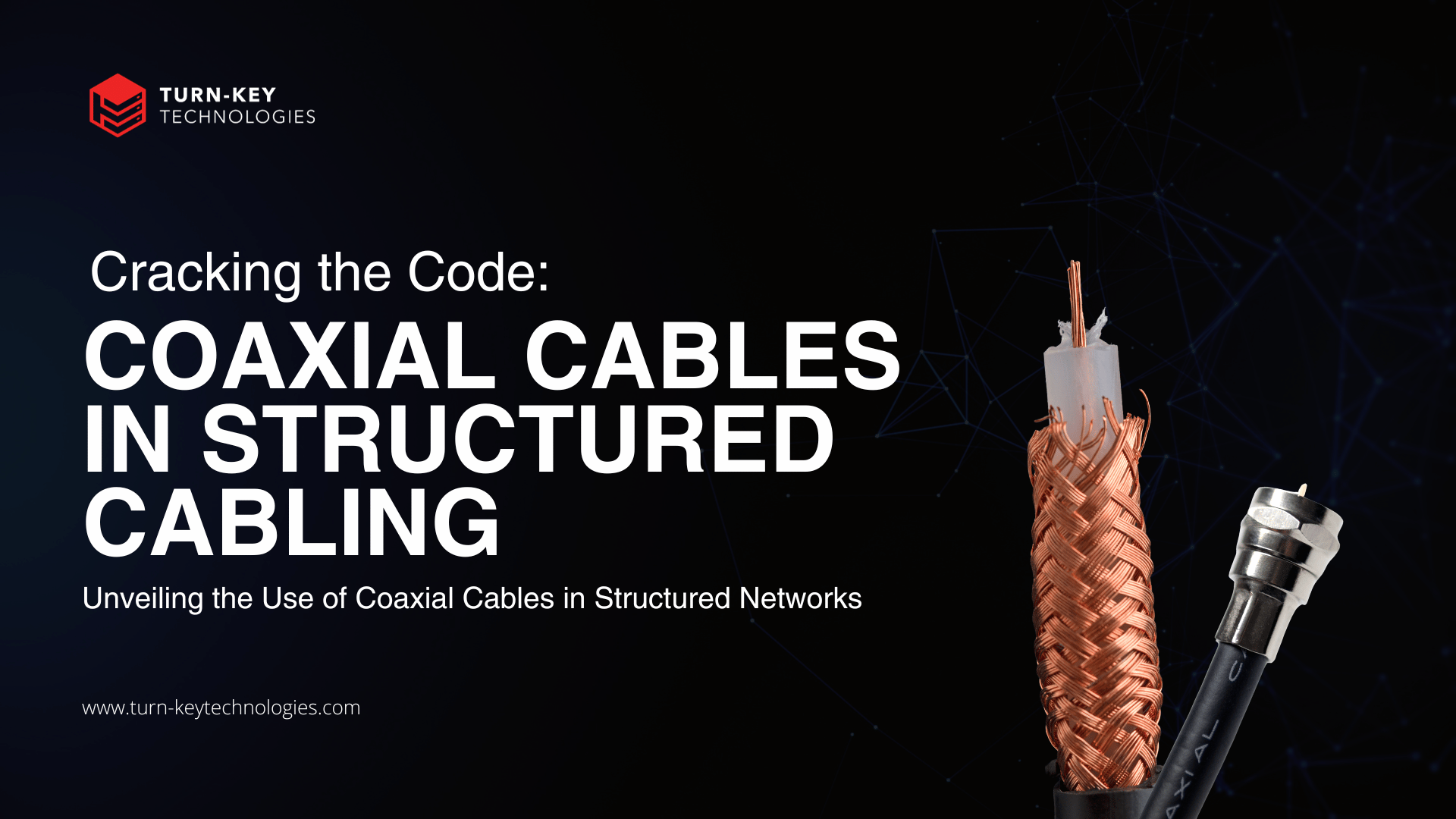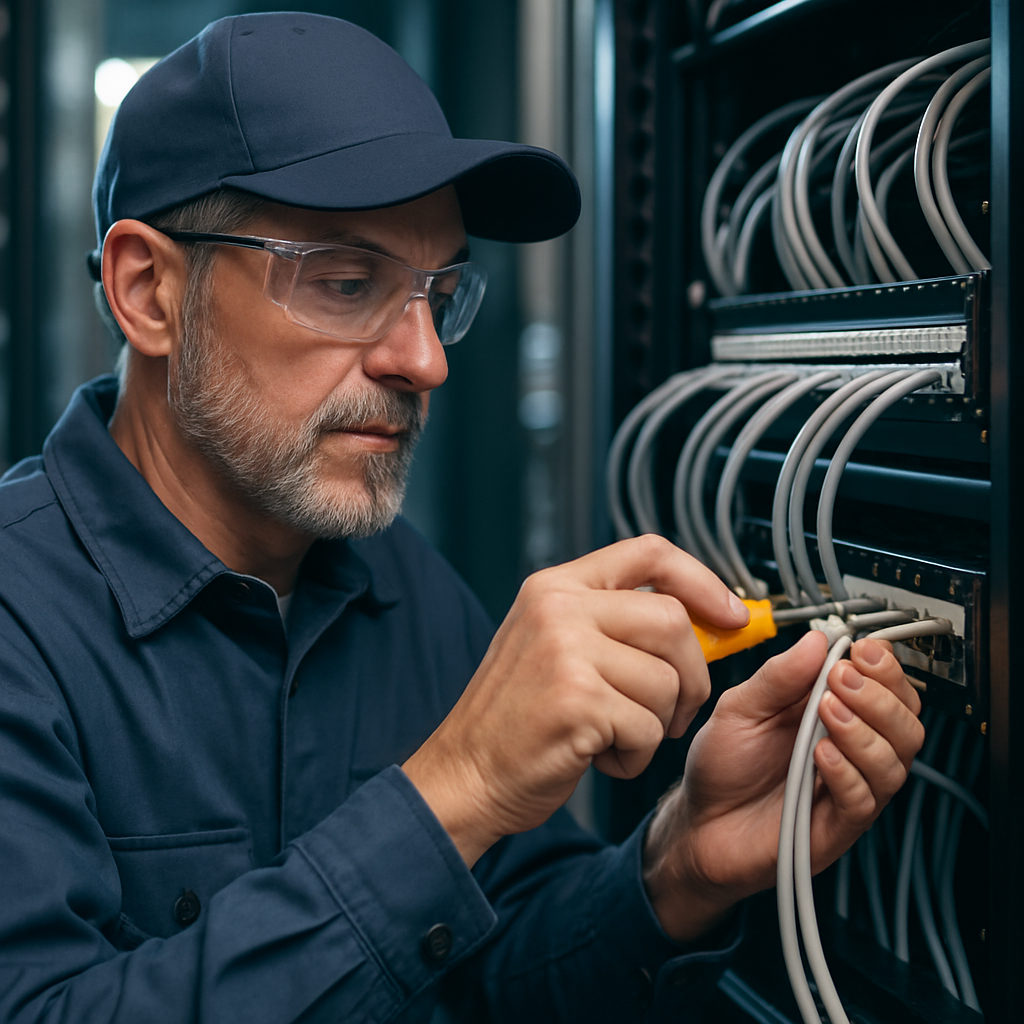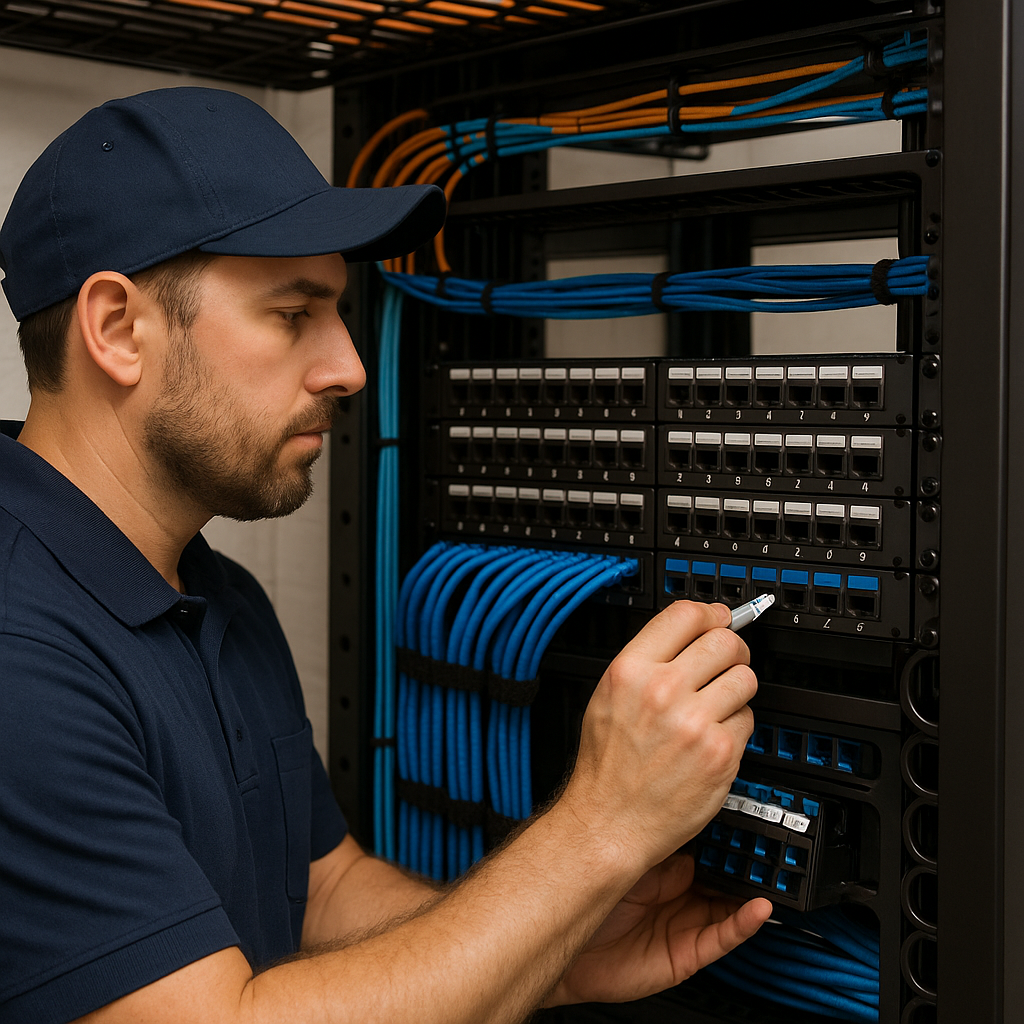Exploring Coaxial Cables Used in Structured Cabling
Coaxial cables play a crucial role in modern networks, specifically in structured cabling systems. These cables come in various types, each with its...
3 min read
Turn-key Technologies Staff : Jan 2, 2024 5:09:55 PM
In today's fast-paced and technology-driven world, a well-designed and implemented structured cabling system is vital for businesses to achieve optimal performance and scalability. Whether it's transmitting data, voice, or video, a structured cabling system serves as the backbone of any organization's network infrastructure. By organizing and standardizing the cabling infrastructure, businesses can ensure reliable connectivity and efficient communication.
A structured cabling system plays a crucial role in any modern network infrastructure. It provides the foundation for the transmission of data, voice, and video signals throughout an organization. By organizing and standardizing the cabling infrastructure, businesses can ensure reliable connectivity and efficient communication.
With the increasing reliance on technology and the growing demand for high-speed data transmission, a well-designed structured cabling system is essential. It allows for easy scalability and adaptability to future technological advancements, reducing the need for costly upgrades or replacements.
Furthermore, a structured cabling system improves network performance and reduces downtime. With proper cable management and organization, troubleshooting and maintenance become easier, resulting in faster problem resolution and minimized disruptions to business operations.
Overall, understanding the importance of a structured cabling system is crucial for businesses aiming to optimize their network infrastructure and ensure seamless communication and data transmission.
Before designing a structured cabling system, it is essential to thoroughly assess and plan for your organization's cabling needs. This involves considering factors such as the current and future network requirements, the physical layout of the building, and the types of devices that will be connected.
Start by conducting a comprehensive audit of your existing infrastructure to identify any bottlenecks, outdated components, or areas for improvement. Evaluate the bandwidth requirements of your network and estimate the number of devices that will be connected to ensure sufficient capacity.
Additionally, consider the future expansion plans of your organization. Will you be adding more employees or devices? Will there be new technologies that require additional cabling? By anticipating future needs, you can design a cabling system that is scalable and adaptable.
Lastly, consult with experienced professionals or network consultants who specialize in structured cabling design. They can provide valuable insights and recommendations based on industry best practices and ensure that your cabling system meets both current and future requirements.
The design phase of a structured cabling system is crucial for achieving optimal performance and scalability. Consider the following best practices when designing your cabling infrastructure:
1. Use a hierarchical design approach: Divide your cabling system into logical sections, such as the entrance facility, equipment room, telecommunications room, and work area. This hierarchical design simplifies troubleshooting and maintenance.
2. Plan for cable pathways: Proper cable management is essential for maintaining a clean and organized cabling infrastructure. Plan for cable pathways, such as conduits, cable trays, and raceways, to ensure cables are neatly routed and protected.
3. Follow industry standards: Adhere to industry standards, such as the TIA/EIA-568 or ISO/IEC 11801, when designing your cabling system. These standards define the requirements for cable performance, connectors, and termination techniques.
4. Allow for future expansion: Design your cabling system with scalability in mind. Leave room for additional cables and equipment to accommodate future growth and technological advancements.
By following these best practices, you can ensure that your structured cabling system is efficient, organized, and capable of supporting your organization's evolving needs.
Proper installation techniques are crucial for the performance and longevity of your structured cabling system. Follow these best practices during the installation process:
1. Use high-quality cables and components: Invest in high-quality cables, connectors, and patch panels to ensure reliable performance and minimize signal loss.
2. Avoid cable bending and stretching: Improper cable handling can lead to signal degradation and cable damage. Avoid sharp bends, excessive stretching, and overloading of cables.
3. Label and document cables: Proper labeling and documentation of cables simplify troubleshooting and maintenance. Use clear and consistent labeling conventions to identify cables and their corresponding endpoints.
4. Test cables during installation: Perform thorough cable testing using appropriate tools, such as cable testers or certification devices, to ensure proper installation and adherence to industry standards.
By implementing these best practices, you can minimize installation errors and ensure that your structured cabling system is installed correctly for optimal performance.
Once your structured cabling system is installed, it is crucial to regularly test and maintain it to ensure continued performance and reliability. Consider the following best practices:
1. Perform regular cable testing: Regularly test the performance of your cables using appropriate testing equipment. This helps identify any issues, such as signal loss or interference, and allows for timely repairs or replacements.
2. Conduct routine inspections: Inspect the physical condition of your cables, connectors, and equipment to identify any signs of wear, damage, or corrosion. Promptly address any issues to prevent further deterioration.
3. Maintain proper cable management: Regularly review and update your cable management practices to ensure cables are organized, labeled, and protected. This makes troubleshooting and maintenance more efficient.
4. Keep documentation up-to-date: Update your documentation whenever changes or additions are made to your cabling system. This ensures accurate record-keeping and simplifies future maintenance and troubleshooting.
By following these best practices for testing and maintenance, you can prolong the lifespan of your structured cabling system and minimize the risk of disruptions or downtime.
To sum up, a well-designed and implemented structured cabling system is essential for businesses looking to optimize their network infrastructure. By organizing and standardizing the cabling infrastructure, businesses can ensure reliable connectivity, efficient communication, and improved network performance. Through careful planning, adherence to industry standards, and proper installation techniques, businesses can create a cabling system that is scalable, adaptable, and capable of meeting their evolving needs. Regular testing and maintenance further guarantee the longevity and dependability of the structured cabling system, enabling businesses to seamlessly operate in today's technology-driven world. With our expertise in structured cabling, we offer comprehensive services in NJ, NYC, and PA, ensuring that your setup complies with the most stringent standards in the industry.

Coaxial cables play a crucial role in modern networks, specifically in structured cabling systems. These cables come in various types, each with its...

6 min read
A high-performance network is built on thousands of precise details, but few are more critical than the termination point. A flawless cable run can...

One bad decision during cabling installation can leave an entire building with unreliable network infrastructure for years. Cabling infrastructure...